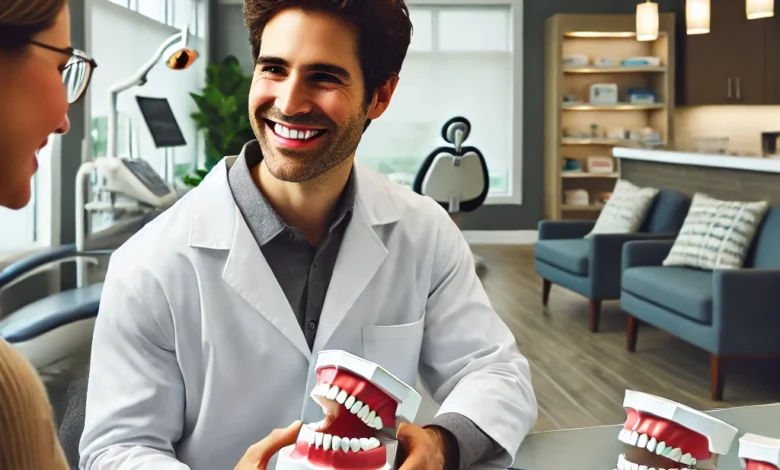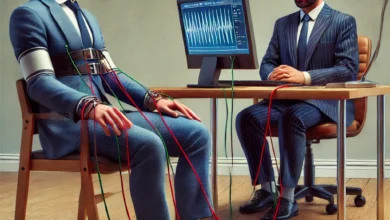Comprehensive Guide to Selecting an Orthodontist in Thunder Bay

Key Factors to Consider When Choosing an Orthodontist in Thunder Bay
1. Experience and Credentials
The first thing to consider is the orthodontist’s experience and qualifications. Look for an orthodontist who is not only a licensed dentist in Thunder Bay but has also completed specialized training in orthodontics. They should have years of practice and expertise in various treatments, from traditional braces to the latest technologies.
- Board Certification: An orthodontist who is board-certified demonstrates their commitment to continuing education and staying updated on the latest trends in orthodontic care.
- Continuing Education: Orthodontic technology is evolving rapidly. Check if the orthodontist participates in continuing education programs to stay up-to-date with the latest methods and technology.
2. Patient Reviews and Testimonials
Word-of-mouth and online reviews can provide valuable insight into the quality of care you can expect. Look for an orthodontist with positive patient reviews and testimonials, particularly regarding their professionalism, office environment, and patient care.
- Online Platforms: Websites like Google, Yelp, and the orthodontist’s social media pages can help you gauge patient satisfaction.
- Before and After Photos: Many orthodontists share photos of their patients’ results, which can give you an idea of their skill level and the effectiveness of their treatments.
3. Advanced Technology
In today’s dental world, technology plays a crucial role in the treatment process. Look for an orthodontist in Thunder Bay who uses state-of-the-art technology to improve the precision, comfort, and effectiveness of treatment. Some examples include:
- Digital Impressions: These are more comfortable than traditional molds and offer more accurate results.
- 3D Imaging and CBCT Scans: These technologies allow orthodontists to create highly accurate digital models of your teeth and jaws, leading to better treatment planning and results.
- Invisalign® Technology: For patients interested in clear aligners, make sure the orthodontist is an authorized provider of Invisalign and uses advanced software to create customized aligner treatments.
4. Treatment Options Available
A good orthodontist should offer a range of treatment options to meet different needs, including traditional braces, clear braces, and Invisalign. The availability of multiple treatment methods ensures that you get the most effective solution for your specific case.
- Traditional Braces: Best for complex cases where precise tooth movement is needed.
- Clear Braces: A more discreet alternative to traditional metal braces.
- Invisalign: A popular choice for adults and teens who prefer a nearly invisible option.
5. Cost and Affordable Orthodontic Solutions
Orthodontic treatment can be an investment, so it’s essential to find an orthodontist who provides transparent pricing and offers affordable solutions.
- Cost of Braces vs. Aligners: While traditional braces tend to be less expensive upfront, Invisalign aligners can sometimes cost more, especially if the treatment takes longer or if complex adjustments are needed. However, many patients find that Invisalign is worth the extra cost due to its comfort and convenience.
- Payment Plans and Financing: Many orthodontists offer payment plans to make treatment more affordable. Inquire about financing options and whether they offer interest-free payment plans.
- Insurance Coverage: Ensure that the orthodontist works with your dental insurance provider. Many plans cover a portion of the cost for braces or Invisalign, though the amount covered can vary. Make sure to discuss this before beginning treatment to avoid surprises.
6. Benefits of Invisalign Treatment
Invisalign treatment offers several benefits over traditional braces:
- Discreet Appearance: Invisalign aligners are clear and nearly invisible, making them ideal for adults or teens who are self-conscious about their appearance.
- Comfortable: Aligners are made of smooth plastic, reducing irritation to the gums and cheeks that often occurs with metal braces.
- Removable: You can take the aligners out for eating, drinking, brushing, and flossing, which makes maintaining oral hygiene much easier compared to traditional braces.
- Fewer Office Visits: Invisalign requires fewer visits to the orthodontist compared to braces, as there are no wires to tighten.
7. The Process of Invisalign Treatment
The Invisalign treatment process typically follows these steps:
- Consultation: The orthodontist will evaluate your teeth and discuss your treatment goals.
- Custom Treatment Plan: Using advanced 3D imaging, the orthodontist will create a personalized treatment plan, including the number of aligners needed.
- Wearing Aligners: You will wear the aligners for 20-22 hours per day, changing to a new set every 1-2 weeks.
- Monitoring Progress: Regular check-ups every 6-8 weeks ensure that your teeth are moving as planned.
- Retention: Once treatment is complete, you’ll need to wear a retainer to maintain your new smile.
8. Post-Treatment Care
After your treatment, it’s essential to maintain your new smile by following your orthodontist’s post-treatment care instructions, such as wearing a retainer. Retainers help prevent your teeth from shifting back to their original position.
Tips for Choosing the Right Treatment
Choosing the best orthodontic treatment for you involves considering several factors:
- Severity of Your Case: Some patients may need traditional braces due to the complexity of their alignment issues.
- Lifestyle Preferences: If you have a busy lifestyle or want a discreet treatment, Invisalign may be the best choice.
- Age: While traditional braces are commonly associated with teenagers, Invisalign is suitable for both teens and adults.
Consultation Tips
- Ask Questions: Don’t hesitate to ask about the different treatment options, the costs, and the expected duration of treatment.
- Treatment Plan Review: Make sure the orthodontist provides a detailed treatment plan, including expected timelines and cost breakdowns.
- Second Opinion: If you’re uncertain, consider getting a second opinion to ensure you’re making an informed decision.
Maintaining Your New Smile
After your treatment is complete, maintaining your smile is vital. Follow your orthodontist’s advice on wearing your retainer, scheduling regular check-ups, and keeping up with oral hygiene to preserve the results.
Why Thunder Bay is a Top Destination for Quality Orthodontic Care
Thunder Bay is home to highly skilled orthodontists who offer cutting-edge treatments and care. The city’s orthodontic community is focused on providing personalized, innovative care to patients, ensuring the best outcomes with advanced technology and comprehensive treatment options. With its emphasis on expertise, customer service, and affordable solutions, Thunder Bay is a top destination for anyone seeking orthodontic care.
Read also: Understanding the Cost Differences Between Invisalign and Braces
Conclusion
Selecting the right orthodontist in Thunder Bay is a crucial step toward achieving a healthier, more beautiful smile. Whether you’re interested in traditional braces or Invisalign, you can trust that Thunder Bay offers a range of qualified orthodontists with innovative solutions tailored to meet your needs.



